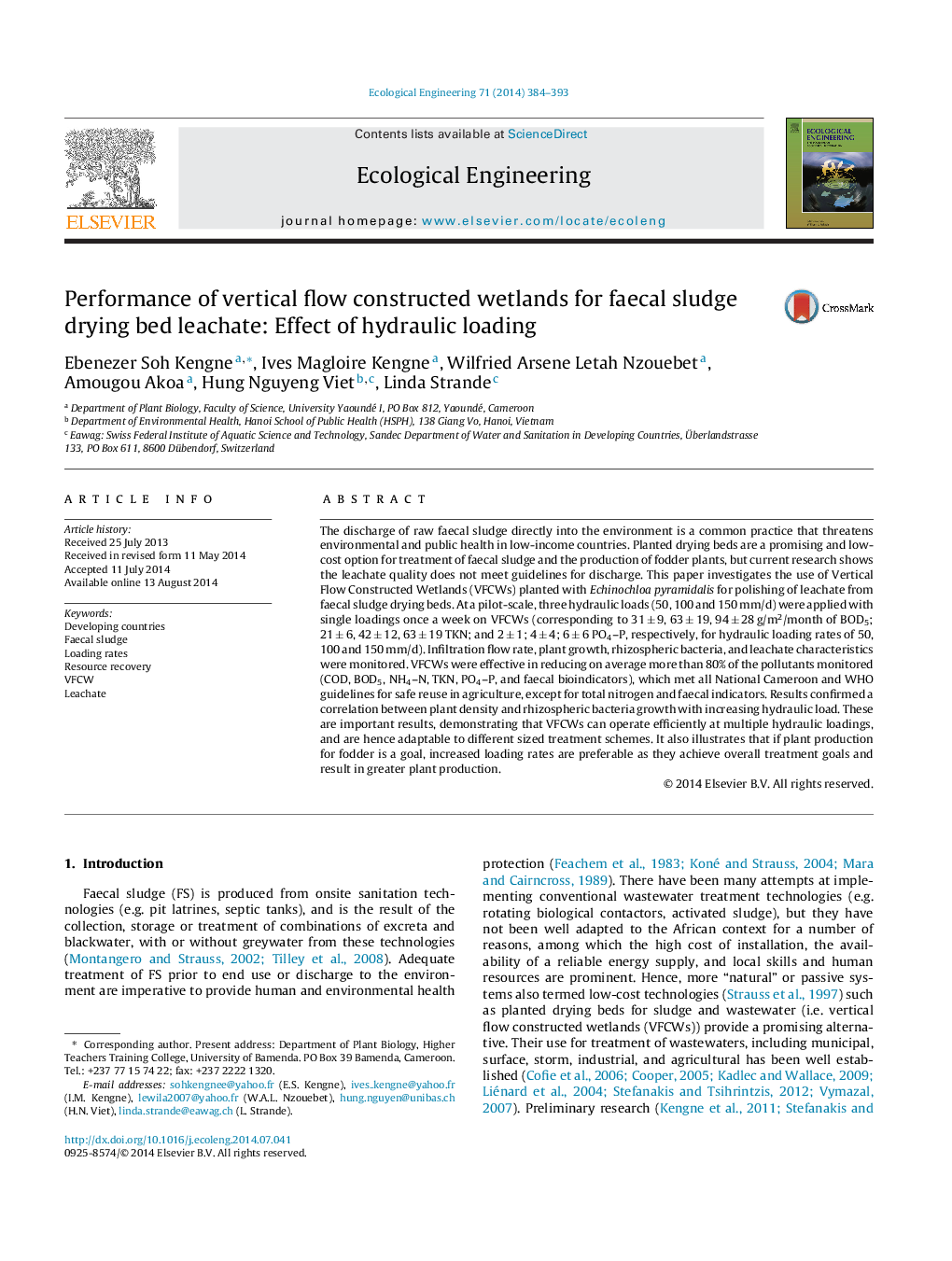| Article ID | Journal | Published Year | Pages | File Type |
|---|---|---|---|---|
| 4389176 | Ecological Engineering | 2014 | 10 Pages |
•Effect of 50, 100 and 150 mm/d hydraulic loading rates on treatment performance of VFCWs was investigated.•VFCWs were effective at removing more than 80% of pollutants.•VFCWs fed once a week performed similarly with different loading rates.•Effluent quality met all Cameroonian guidelines, except nitrogen and faecal coliforms.•Plant growth and density increased with hydraulic load.
The discharge of raw faecal sludge directly into the environment is a common practice that threatens environmental and public health in low-income countries. Planted drying beds are a promising and low-cost option for treatment of faecal sludge and the production of fodder plants, but current research shows the leachate quality does not meet guidelines for discharge. This paper investigates the use of Vertical Flow Constructed Wetlands (VFCWs) planted with Echinochloa pyramidalis for polishing of leachate from faecal sludge drying beds. At a pilot-scale, three hydraulic loads (50, 100 and 150 mm/d) were applied with single loadings once a week on VFCWs (corresponding to 31 ± 9, 63 ± 19, 94 ± 28 g/m2/month of BOD5; 21 ± 6, 42 ± 12, 63 ± 19 TKN; and 2 ± 1; 4 ± 4; 6 ± 6 PO4–P, respectively, for hydraulic loading rates of 50, 100 and 150 mm/d). Infiltration flow rate, plant growth, rhizospheric bacteria, and leachate characteristics were monitored. VFCWs were effective in reducing on average more than 80% of the pollutants monitored (COD, BOD5, NH4–N, TKN, PO4–P, and faecal bioindicators), which met all National Cameroon and WHO guidelines for safe reuse in agriculture, except for total nitrogen and faecal indicators. Results confirmed a correlation between plant density and rhizospheric bacteria growth with increasing hydraulic load. These are important results, demonstrating that VFCWs can operate efficiently at multiple hydraulic loadings, and are hence adaptable to different sized treatment schemes. It also illustrates that if plant production for fodder is a goal, increased loading rates are preferable as they achieve overall treatment goals and result in greater plant production.
Graphical abstractFigure optionsDownload full-size imageDownload as PowerPoint slide
